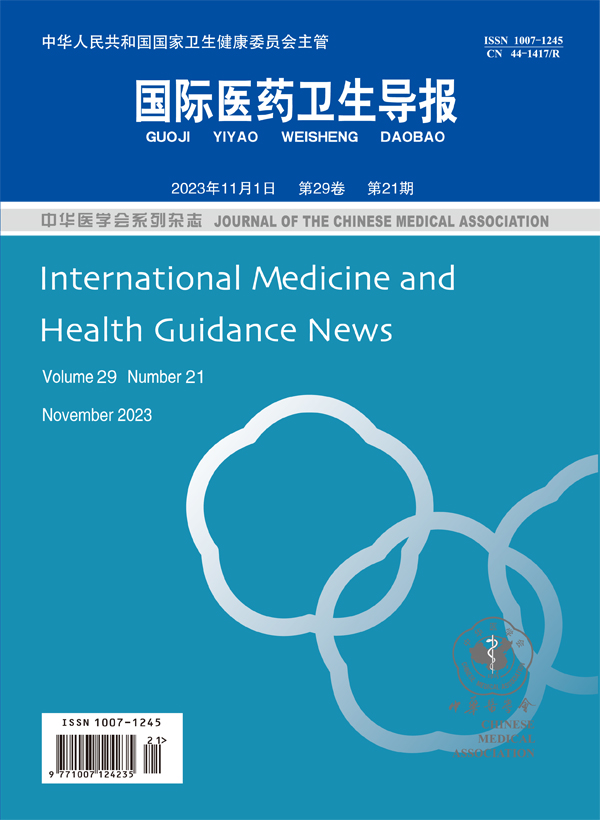Effects of levofloxacin combined with heparin on serum PCT and CRP levels in hemodialysis patients with catheter infection
引用次数: 0
Abstract
Objective To investigate the effect of levofloxacin combined with heparin on serum PCT and CRP levels in hemodialysis patients with catheter infection. Methods 82 hemodialysis patients with catheter infection admitted to our hospital from January 2017 to January 2018 were selected and were randomly divided into two groups. The control group was treated with levofloxacin, and the study group was treated with heparin on the basis of the control group. The incidence of adverse reactions, WBC and CRP levels, PCT and ESR levels, and inflammatory factors levels were compared between the two groups. Results There was no statistically significant difference in the incidence of adverse reactions between the two groups (P>0.05). There were no statistically significant differences in WBC and CRP levels between the two groups before treatment (P>0.05). After treatment, the WBC and CRP levels in the study group [(4.1±2.2)×109/L, (5.1±2.3)mg/L] were lower than those in the control group (P 0.05). After treatment, the PCT and ESR levels in the study group [(0.8±0.2)μg/L, (19.3±3.2)mm/h] were lower than those in the control group (P 0.05). After treatment, the TNF-α, IL-6, and TG levels in the study group [(16.1±6.3)μg/L, (35.1±8.5)ng/L, (4.5±2.3)mmol/L] were significantly lower than those in the control group (P<0.05). Conclusion Levofloxacin combined with heparin can significantly improve WBC and CRP levels, PCT and ESR levels in hemodialysis patients with catheter infection, which can reduce inflammatory factors levels, improve safety, and improve patients’ prognosis. Therefore, levofloxacin and heparin should be further promoted and applied. Key words: Levofloxacin; Heparin; Hemodialysis; Catheter infection; Serum PCT level; Serum CRP level左氧氟沙星联合肝素对血液透析伴导管感染患者血清PCT和CRP水平的影响
目的探讨左氧氟沙星联合肝素对血液透析患者导管感染患者血清PCT和CRP水平的影响。方法选取2017年1月至2018年1月我院收治的82例导管感染血液透析患者,随机分为两组。对照组给予左氧氟沙星治疗,研究组在对照组的基础上给予肝素治疗。比较两组患者不良反应发生率、WBC、CRP水平、PCT、ESR水平及炎症因子水平。结果两组患者不良反应发生率比较,差异无统计学意义(P < 0.05)。两组患者治疗前WBC、CRP水平比较,差异均无统计学意义(P < 0.05)。治疗后,研究组WBC、CRP水平[(4.1±2.2)×109/L,(5.1±2.3)mg/L]均低于对照组(P < 0.05)。治疗后,研究组PCT、ESR水平[(0.8±0.2)μg/L,(19.3±3.2)mm/h]均低于对照组(P < 0.05)。治疗后,研究组血清TNF-α、IL-6、TG水平[(16.1±6.3)μg/L、(35.1±8.5)ng/L、(4.5±2.3)mmol/L]均显著低于对照组(P<0.05)。结论左氧氟沙星联合肝素可显著改善血透术后导管感染患者的WBC、CRP水平、PCT、ESR水平,降低炎症因子水平,提高安全性,改善患者预后。因此,左氧氟沙星和肝素应进一步推广应用。关键词:左氧氟沙星;肝素钠;血液透析;导管感染;血清PCT水平;血清CRP水平
本文章由计算机程序翻译,如有差异,请以英文原文为准。
求助全文
约1分钟内获得全文
求助全文

 求助内容:
求助内容: 应助结果提醒方式:
应助结果提醒方式:


